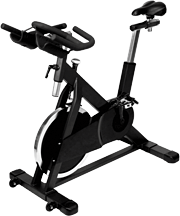An important collection of papers published in research journal
The Lancet
highlight the global impact of low back pain, the ineffectiveness of
current medical treatments, and the value of spinal manipulation and
other nondrug options
before turning to medication is receiving substantial media attention. One of the brightest spotlights: a "
Health Alert"
segment on a recent episode of "Good Morning America" titled "New
Research on Lower Back Pain: Are Millions of People Getting Ineffective
Treatment?"
"GMA" anchor Robin Roberts opened the segment with this statement to
the show's estimated 4.5 million viewers regarding lower back pain: "As
many as 540 million people suffer from it. According to new research,
many treatments, [including surgery and pain medication] ... could be
all wrong."
She then introduced Dr. Jennifer Ashton, chief health and medical
editor for the show. Dr. Ashton, who described the papers as the "magnum
opus on low back pain" and
The Lancet as "very reputable,"
said the material "[draws] attention to the massive gap between
evidence-based medicine and what's really going on" when it comes to the
treatment of back pain.
According to Dr. Ashton, reporting on the papers, back pain is a
"massive global public health burden." First-line treatments include
staying active ("the worst thing you can do is get in bed") and
education: learning "what works and doesn't from reputable sources."
Second-line treatment options (Dr. Ashton urged viewers, "This is really
what I want people to pay attention to") include superficial heat,
spinal manipulation, massage and acupuncture. [Italics mine]

Dr. Ashton added that NSAID medication (nonsteroidal anti-inflammatory
drugs, commonly available as over-the-counter pain meds such as Advil,
Aleve, etc.) is also considered a second-line treatment according to
The Lancet papers, but should be utilized "only if the other things are not working."
The
Lancet content on lower back pain, published online on
March 21, features two "series" papers, a "viewpoint" and a "comment,"
all of which are available in full-text format free of charge on the
journal's website:
- "What Low Back Pain Is and Why We Need to Pay Attention" (Series 1) (Hartvigsen J., et al.)
- "Prevention and Treatment of Low Back Pain: Evidence, Challenges and Promising Directions" (Series 2) (Foster N.E., et al.)
- "Low Back Pain: A Call for Action" (Viewpoint) (Buchbinder R., et al.)
- "Low Back Pain: A Major Global Challenge" (Comment) (Clark S., et al.)
The "GMA Health Alert" on LBP is also available online in its entirety, and can be accessed by
clicking here. To access the
Lancet
content, click the links above. To learn more about the value of
chiropractic spinal manipulation for low back pain and why pain
medication isn't your first option, talk to your doctor.

